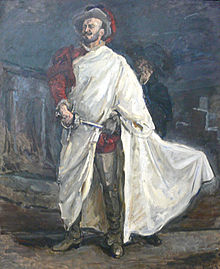Songs / Down Memory Lane
The song "Those Were the Days" is credited to Gene Raskin, who set a new English lyric to the Russian romance song "Dorogoi dlinnoyu" (literally "By the long road"), composed by Boris Fomin (1900-1948) with words by the poet Konstantin Podrevsky. It deals with reminiscence upon youth and romantic idealism. Mary Hopkin's 1968 version of this song, produced by Paul McCartney, became a number one hit on the UK Singles Chart. It also reached number two on the Billboard Hot 100, behind McCartney's own famous band The Beatles' hit "Hey Jude."
Video Credit:
Mary Hopkin - Those Were the Days. YouTube, uploaded by Ahmad F Elyan. Accessed November 15, 2013.
Resource:
Those Were the Days (Song). en.wikipedia.org. Accessed October 28, 2013.
(c) 2013. Tel. Inspired Pen Web. All rights reserved.
The song "Those Were the Days" is credited to Gene Raskin, who set a new English lyric to the Russian romance song "Dorogoi dlinnoyu" (literally "By the long road"), composed by Boris Fomin (1900-1948) with words by the poet Konstantin Podrevsky. It deals with reminiscence upon youth and romantic idealism. Mary Hopkin's 1968 version of this song, produced by Paul McCartney, became a number one hit on the UK Singles Chart. It also reached number two on the Billboard Hot 100, behind McCartney's own famous band The Beatles' hit "Hey Jude."
Video Credit:
Mary Hopkin - Those Were the Days. YouTube, uploaded by Ahmad F Elyan. Accessed November 15, 2013.
Resource:
Those Were the Days (Song). en.wikipedia.org. Accessed October 28, 2013.
(c) 2013. Tel. Inspired Pen Web. All rights reserved.






